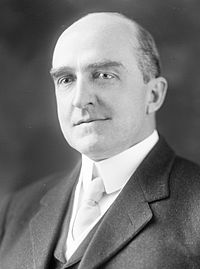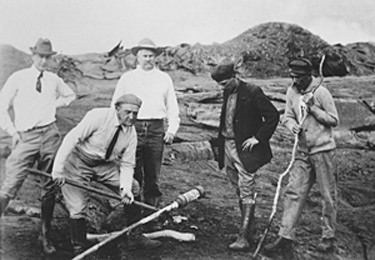Biographical Information

Born in 1871 in Philidelphia, Pennsylvania, Thomas Jaggar son of Bishop Thomas Augustus Jaggar
Anna Louisa Lawrence was a major contributor to modern geology and volcanology. Jaggar was a strong believer that hands on field experience was the key to understanding geology. Jaggar believed that the laboratory setting was an integral pat of learning geoscience, but he felt there was nothing like measuring nature itself. He earned his PhD in geology from Harvard University. He then began a ten year journey working in the field.
Jagger traveled the world to numerous active volcanoes, and earthquake sites investigating, and experiencing firsthand the power of Mother Nature. He later became the lead geologist at MIT where he continued to travel the globe investigating the tragedies of powerful earthquakes and volcanoes. He knew there had to be a better method of studying these events.
In 1909, Thomas Jagger traveled to Honolulu, Hawaii. He decided this would be the location of America’s first Volcano observatory. Jagger worked on this project until his death in 1953
Contributions to Geophysics
- Thomas Jagger created the first Volcanic Observatory in the United States
- After many years of study, observation, experimentation and fund raising Jagger opened the first Volcanic observatory in the United States.
- Located in Hawaii (Kilauea)
- MIT did not support Jaggar at first
-
- Wanted it to be closer to MIT
- Some felt it was out of the scope of MIT
- Eventually convinced MIT president and treasurer to proceed with observatory
-
- After many years of study, observation, experimentation and fund raising Jagger opened the first Volcanic observatory in the United States.
- Jaggar's team recorded the temperature of a lava lake
- 1010oC
- Jaggar was not there due to the birth of one of his children

- Made the first accurate prediction of a tsunami.
- Used the bosh omori seismograph to detect minor earthquake to help predict volcanic eruptions. Used this to predict tsunami.
- In the morning on March 2, 1933 in Japan
- 10 minutes before first wave
- Cargo ships sent out to sea, piers were cleared, lives saved!
- Used the bosh omori seismograph to detect minor earthquake to help predict volcanic eruptions. Used this to predict tsunami.
Other interesting scientific contributions
Had a museum dedicated after him in 1987

Other Facts about Jaggar
- Hawaiian Volcanic Observatory officially opened 1 July 1912
- This was when Jaggar began getting paid
- MIT disassociated themselves with Jaggar and the HVO after rumors of infadelity
- Jaggar’s wife and children divorced and left Hawaii six weeks after arriving on the Hawaiian Islands.
- He rarely saw them after this point
http://www.encyclomedia.com/video-thomas_a_jagger_in_hawaii.html
Bibliography
"Thomas Jaggar." Wikipedia, the Free Encyclopedia. Web. 05 June 2011. <http://en.wikipedia.org/wiki/Thomas_Jaggar>.
Dvorak, John. "The Origin of the Hawaiian Volcano Observatory." Physics Today (May 2011): 32-36. Print.
"HVO History." USGS Hawaiian Volcano Observatory (HVO). Web. 14 June 2011. <http://hvo.wr.usgs.gov/observatory/hvo_history.html>.